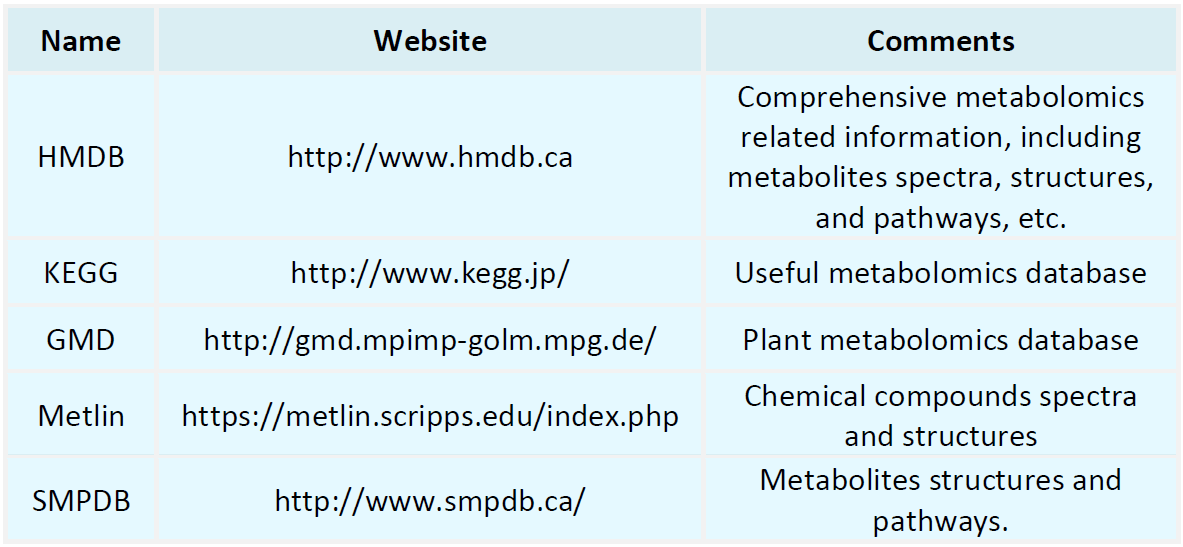Resources
Proteomics Databases

Metabolomics Databases

-
• Overview of Protein Phosphorylation Detection Techniques
Protein phosphorylation detection primarily encompasses antibody-based approaches, mass spectrometry (MS)-based phosphoproteomic analyses combined with phosphopeptide enrichment strategies, as well as emerging technologies with single-cell and spatial resolution capabilities (e.g., proximity ligation assay [PLA], mass spectrometry imaging [MSI]). Protein phosphorylation is one of the most essential post-translational modifications (PTMs), playing a pivotal role in cellular signal transduction, metabol......
-
• Common Reasons for Olink Experiment Failures and Corresponding Solutions
In proteomic studies using the Olink platform based on Proximity Extension Assay (PEA) technology, researchers are able to profile thousands of proteins using only minimal amounts of plasma or serum (1–3 μL). Nonetheless, experiments may encounter various obstacles. Low detection rates, limited reproducibility, and systematic bias can render data unusable or lead to inaccurate conclusions. This article summarizes the major causes of failure in Olink experiments and provides practical solutions to help......
-
• Accurate Determination of Protein Molecular Weight by Mass Spectrometry
Proteins serve as the primary functional molecules in cellular processes, and their molecular weight directly reflects their amino acid sequence and structural integrity. As such, molecular weight is a critical parameter in protein identification, functional prediction, and quality control. In the biopharmaceutical industry, minor variations in protein molecular weight often indicate post-translational modifications (e.g., glycosylation, oxidation) or the presence of degradation products, which are cr......
-
• Designing an Efficient Co‑immunoprecipitation (Co‑IP) Protocol
Co-immunoprecipitation (Co‑IP) is a classical technique for investigating protein–protein interactions, widely applied in the analysis of signaling pathways, target validation, and drug mechanism studies. By enriching target proteins and their associated complexes using specific antibodies, followed by detection via Western blot or mass spectrometry, Co‑IP enables the effective capture of native protein interactions within cells. Despite its seemingly straightforward principle, Co‑IP is technically de......
-
• Targeted Metabolomics: Principles and Key Techniques
Metabolites represent the most immediate biochemical reflection of physiological states in life science research. Unlike genomics, transcriptomics, or proteomics, metabolomics directly captures cellular and systemic responses to internal and external environmental perturbations, making it a vital tool for elucidating disease mechanisms, identifying biomarkers, and exploring drug actions. Among various branches of metabolomics, targeted metabolomics has gained increasing prominence in diverse research ......
-
• Mass Spectrometry in Histone Modification Research: Advantages and Challenges
Post-translational modifications (PTMs) of histones play a central role in regulating chromatin architecture, gene expression, and cell fate decisions. Diverse modification types, including acetylation (Ac), methylation (Me), phosphorylation (P), and ubiquitination (Ub), constitute a complex histone modification code that collectively orchestrates epigenetic regulation. In recent years, the rapid advancement of mass spectrometry (MS) has transformed histone PTM research, enabling comprehensive analysi......
-
• Quantitative Methods for Phosphoproteomics
Quantitative phosphoproteomics encompasses a suite of experimental strategies that utilize mass spectrometry to measure the sites, abundance, and dynamic alterations of protein phosphorylation within biological samples. These approaches enable researchers to monitor phosphorylation changes under varying biological conditions, such as disease states, pharmacological interventions, or signal stimulation. As one of the most prevalent and essential reversible modifications in cellular signaling, protein p......
-
• Fundamental Principles of High-Resolution Mass Spectrometry
High-Resolution Mass Spectrometry (HRMS) is an advanced analytical technique capable of precisely determining ion masses with exceptionally high mass resolution. It is widely employed for the detection of trace components in complex biological samples and finds broad applications in proteomics, metabolomics, drug metabolism studies, and biomarker discovery. The primary advantage of HRMS lies in its ability to accurately resolve ions with minimal mass differences, thereby enabling high-sensitivity and ......
-
• Protein Phosphorylation: Mechanisms, Types, and Research Techniques
Protein phosphorylation is a reversible form of post-translational modification that plays a pivotal role in cellular processes such as signal transduction, metabolic regulation, and cell cycle progression. By covalently attaching phosphate groups to specific amino acid residues, typically serine, threonine, or tyrosine, phosphorylation induces rapid changes in protein structure and function. This mechanism enables cells to swiftly respond to external stimuli. Aberrant phosphorylation states are intim......
-
• Using ABPP for Small Molecule Screening and Mechanistic Studies
In the early stages of drug discovery and mechanism-of-action (MoA) research, traditional high-throughput screening (HTS) approaches can identify active compounds from large chemical libraries. However, they often fail to address a critical question: How does the compound exert its biological effect? This is precisely where Activity-Based Protein Profiling (ABPP), a proteomics technique based on active-site-directed chemical labeling, offers unique advantages. ABPP is a chemical probe-based strategy e......
How to order?







